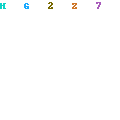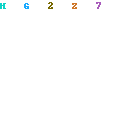One of the biggest challenges you’ll ever face when investing in properties is wholesaling real estate owned properties. As you may know, banks and lenders have certain policies on flipping REOs. Many of them prohibit buyers from assigning the contracts or quickly reselling these properties to other buyers.
So how does a real estate investor wholesales bank owned properties? It is quite simple actually. By doing simultaneous closing. A simultaneous closing occurs when a property is bought and sold on the same day. It basically means that two separate real estate transactions are being completed on the same day.
A simultaneous closing follows the A-to-B-to-C pattern of transaction. The A stands for the bank or lender that owns the REO, while the B stands for the wholesaler. The C, on the other hand, denotes the end buyer of the property. In the A-to-B transaction, the bank sells the property to the wholesaler. And in the B-to-C transaction, the wholesaler flips the property to the end buyer.
There are two types of simultaneous closing. The first one is called a simultaneous double-closing, popularly known as a “dry” close. In this method of wholesaling real estate owned properties, the wholesaler uses the funds of the end buyer to close the A-to-B deal. So if you’re going to do a “wet” close to complete an REO deal, you don’t have to bring your own money to the closing table.
However, there’s a disadvantage to doing a simultaneous double-closing. This method won’t work if the end buyer is going to get an FHA loan. Assigning the contracts of properties repossessed by Fannie Mae and Freddie Mac can also become a challenge because these two mortgage companies put deed restrictions to prevent buyers from reselling REO properties to anyone within three months.
The second type of simultaneous closing is called the true double-closing or “wet” close. Doing a true double-closing is pretty much the same as when doing a wet close. The difference between a wet and dry close, however, is that the wholesaler is the one who pays for the A-to-B transaction. Meaning, you will have to buy the property from the bank first before you can flip it to the end buyer.
If you don’t have enough cash to buy the investment property from the lender, don’t fret. You can always get transactional funding from hard money and private money lenders to make the process of wholesaling real estate owned properties a huge success.
Want to get more real estate investing tips? Go to www.REIWired.com.




No comments:
Post a Comment